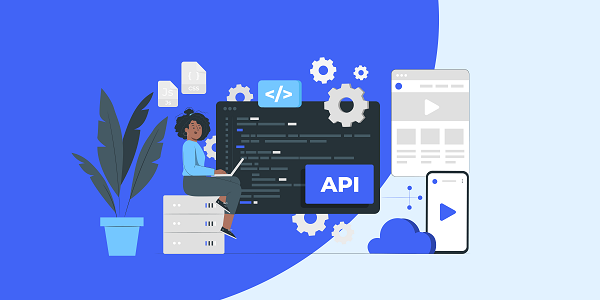Residential Proxies
Allowlisted 200M+ IPs from real ISP. Managed/obtained proxies via dashboard.

Proxies
Residential Proxies
Allowlisted 200M+ IPs from real ISP. Managed/obtained proxies via dashboard.
Residential (Socks5) Proxies
Over 200 million real IPs in 190+ locations,
Unlimited Residential Proxies
Use stable, fast, and furious 700K+ datacenter IPs worldwide.
Static Residential proxies
Long-lasting dedicated proxy, non-rotating residential proxy
Dedicated Datacenter Proxies
Use stable, fast, and furious 700K+ datacenter IPs worldwide.

Web Unblocker
View content as a real user with the help of ABC proxy's dynamic fingerprinting technology.
Proxies
API
Proxy list is generated through an API link and applied to compatible programs after whitelist IP authorization
User+Pass Auth
Create credential freely and use rotating proxies on any device or software without allowlisting IP
Proxy Manager
Manage all proxies using APM interface

Proxies
Residential Proxies
Allowlisted 200M+ IPs from real ISP. Managed/obtained proxies via dashboard.
Starts from
$0.77/ GB
Residential (Socks5) Proxies
Over 200 million real IPs in 190+ locations,
Starts from
$0.045/ IP
Unlimited Residential Proxies
Use stable, fast, and furious 700K+ datacenter IPs worldwide.
Starts from
$79/ Day
Rotating ISP Proxies
ABCProxy's Rotating ISP Proxies guarantee long session time.
Starts from
$0.77/ GB
Static Residential proxies
Long-lasting dedicated proxy, non-rotating residential proxy
Starts from
$5/MONTH
Dedicated Datacenter Proxies
Use stable, fast, and furious 700K+ datacenter IPs worldwide.
Starts from
$4.5/MONTH
Knowledge Base
English
繁體中文
Русский
Indonesia
Português
Español
بالعربية


This article deeply compares the core logic and application boundaries of Dynamic Pricing and Surge Pricing, analyzes their technical implementation and consumer psychological impact in different business scenarios, and provides methodological support for enterprises to formulate pricing strategies that maximize profits.
Concept definition: the essential difference between dynamics and peak
1. Dynamic Pricing
Definition: A strategy that continuously adjusts prices based on real-time market data (such as supply and demand, inventory levels, and user behavior) with the goal of achieving optimal resource allocation and maximizing revenue.
Core variables:
Demand elasticity: the sensitivity of price changes to sales volume (e.g., luxury goods have low elasticity, daily necessities have high elasticity).
Competitive situation: changes in competing product pricing and market share.
Cost fluctuations: raw material prices, logistics costs, etc.
Typical industries: airline ticketing (such as airfares fluctuating with booking time), hotel reservations, and e-commerce promotions (such as Amazon adjusting prices every hour).
2. Surge Pricing
Definition: A subset of Dynamic Pricing, specifically referring to a short-term price surge mechanism triggered by a surge in demand during specific periods or scenarios (such as extreme weather, holidays, emergencies).
Trigger conditions:
Supply and demand imbalance: Available resources are far less than the instantaneous demand (such as Uber's shortage of cars on rainy days).
Capacity limit: The service capacity reaches a critical value (such as the price of concert tickets increasing before they are sold out).
Typical industries: shared travel (Uber, Didi), food delivery (surcharges during peak hours), and energy (electricity pricing based on time of use).
Key Differences:
Time granularity: Dynamic Pricing can be long-term (such as seasonal discounts), while Surge Pricing focuses on short-term peaks.
Goal-oriented: the former balances long-term benefits, while the latter prioritizes alleviating immediate supply and demand conflicts.
Consumer perception: Surge Pricing can easily trigger negative emotions due to sudden price changes, while Dynamic Pricing reduces resistance through gradual adjustments.
Technical implementation: algorithm model and data infrastructure
1. Dynamic Pricing Technology Stack
Prediction Model:
Time series analysis (ARIMA, LSTM) predicts demand trends.
Reinforcement learning (RL) simulates market games and dynamically optimizes pricing strategies.
Data Source:
Internal data: historical sales, inventory turnover, user click streams.
External data: competitor product prices (must be collected anonymously through proxy IP) and macroeconomic indicators.
Execution system:
Automated pricing engines (such as Boomi, PROS) achieve API-level price synchronization.
2. Surge Pricing’s real-time response mechanism
Threshold trigger:
Set a demand/supply ratio (e.g. 1.5x) as the price increase threshold.
Dynamically adjust thresholds to avoid excessive price increases (such as Didi’s “supply and demand heat map”).
Elastic computing:
Estimate service waiting time based on queuing theory and deduce price increase.
Finite state machine (FSM) manages the pricing rules for different peak values.
User-side smoothing strategy:
Progressive notifications (e.g. “Current demand is high, we recommend you order later”).
The price is capped (for example, the maximum is set to 3 times the base price).
Commercial influence and consumer psychology game
1. Quantitative effect of revenue improvement
Dynamic Pricing Example:
After airlines adopt dynamic pricing, their average revenue increases by 12%-15% (IATA data).
The retail industry has reduced losses from unsaleable inventory by 30% through real-time price adjustments.
Surge Pricing Example:
Uber's surge pricing increases driver supply by 20%-30% and reduces passenger waiting time by 40%.
The food delivery platform started charging extra during heavy rain, and the order completion rate increased to 95%.
2. Consumer behavior and fairness disputes
Positive Feedback:
Price transparency enhances trust (e.g. stating “this is peak time”).
Flexible demand users actively choose non-peak hours to save money.
Downside risks:
Allegations of price discrimination (e.g. different users seeing different quotes for the same flight).
Ethical controversies (e.g. price increases of necessities during a disaster are seen as “profiteering from the national disaster”).
Balanced strategy:
Enhanced transparency: Make pricing logic public (e.g. Disneyland’s “tiered fare calendar”).
Social responsibility clause: Freeze surge pricing in emergency scenarios (such as Lyft canceling price increases during natural disasters).
Implementation Challenges and Optimization Paths
1. Data quality and algorithmic bias
Challenge: Implicit biases in historical data (such as gender and regional discrimination) lead to unfair pricing.
Solution:
Introduce fairness constraints (such as the price difference between different user groups does not exceed 5%).
Extreme scenarios are simulated through the Generative Adversarial Network (GAN) to test the robustness of the algorithm.
2. System Delay and Competition Response
Challenge: Delayed price updates lead to “price anchoring” by competing products (such as price-following robots on e-commerce platforms).
Solution:
Edge computing nodes implement millisecond-level price adjustments (such as CDN deployment pricing models).
Counterattack against competitor crawlers: Hide the real data collection behavior through proxy IP pools (such as abcproxy’s residential proxy).
Summarize
The essence of Dynamic Pricing and Surge Pricing is to regulate market behavior through price leverage, but their application must strictly match business scenarios:
Choose Dynamic Pricing: When the business requires long-term optimization of resource allocation (such as inventory turnover and user retention).
Enable Surge Pricing: When short-term supply and demand imbalances threaten service availability (e.g., capacity, energy, ticketing).
For businesses, the key to success is:
Data closed loop: To build a real-time data pipeline (such as competitor monitoring and user behavior analysis), it is necessary to securely obtain external data through a highly anonymous proxy IP (such as abcproxy's residential proxy).
Algorithm iteration: Regularly evaluate the impact of pricing models on long-term brand value to avoid excessive pursuit of short-term gains.
Consumer education: Reduce the trust crisis caused by sudden price changes through UI/UX design (such as price history curves and price comparison tools).
As a professional proxy IP service provider, abcproxy provides a variety of high-quality proxy IP products, including residential proxy, data center proxy, static ISP proxy, Socks5 proxy, unlimited residential proxy, which are suitable for competitive product data collection, user behavior simulation and compliance audit in dynamic pricing strategies. If you need to build a global real-time pricing system, please visit the abcproxy official website to obtain customized data solutions.
Featured Posts
Popular Products
Residential Proxies
Allowlisted 200M+ IPs from real ISP. Managed/obtained proxies via dashboard.
Residential (Socks5) Proxies
Over 200 million real IPs in 190+ locations,
Unlimited Residential Proxies
Use stable, fast, and furious 700K+ datacenter IPs worldwide.
Rotating ISP Proxies
ABCProxy's Rotating ISP Proxies guarantee long session time.
Residential (Socks5) Proxies
Long-lasting dedicated proxy, non-rotating residential proxy
Dedicated Datacenter Proxies
Use stable, fast, and furious 700K+ datacenter IPs worldwide.
Web Unblocker
View content as a real user with the help of ABC proxy's dynamic fingerprinting technology.
Related articles

Why do you need a dedicated proxy IP to buy shoes on SNKRS
This article analyzes the core role of dedicated proxy IP in SNKRS snap-ups, explores how to improve the success rate through proxy IP technology, and introduces how abcproxy provides professional solutions for sneaker enthusiasts.

How to search for Taobao products through pictures
This article analyzes the implementation logic of Taobao's image search technology, explores practical methods to improve search efficiency, and explains the application value of proxy IP services in e-commerce data collection, and recommends abcproxy professional proxy solutions.